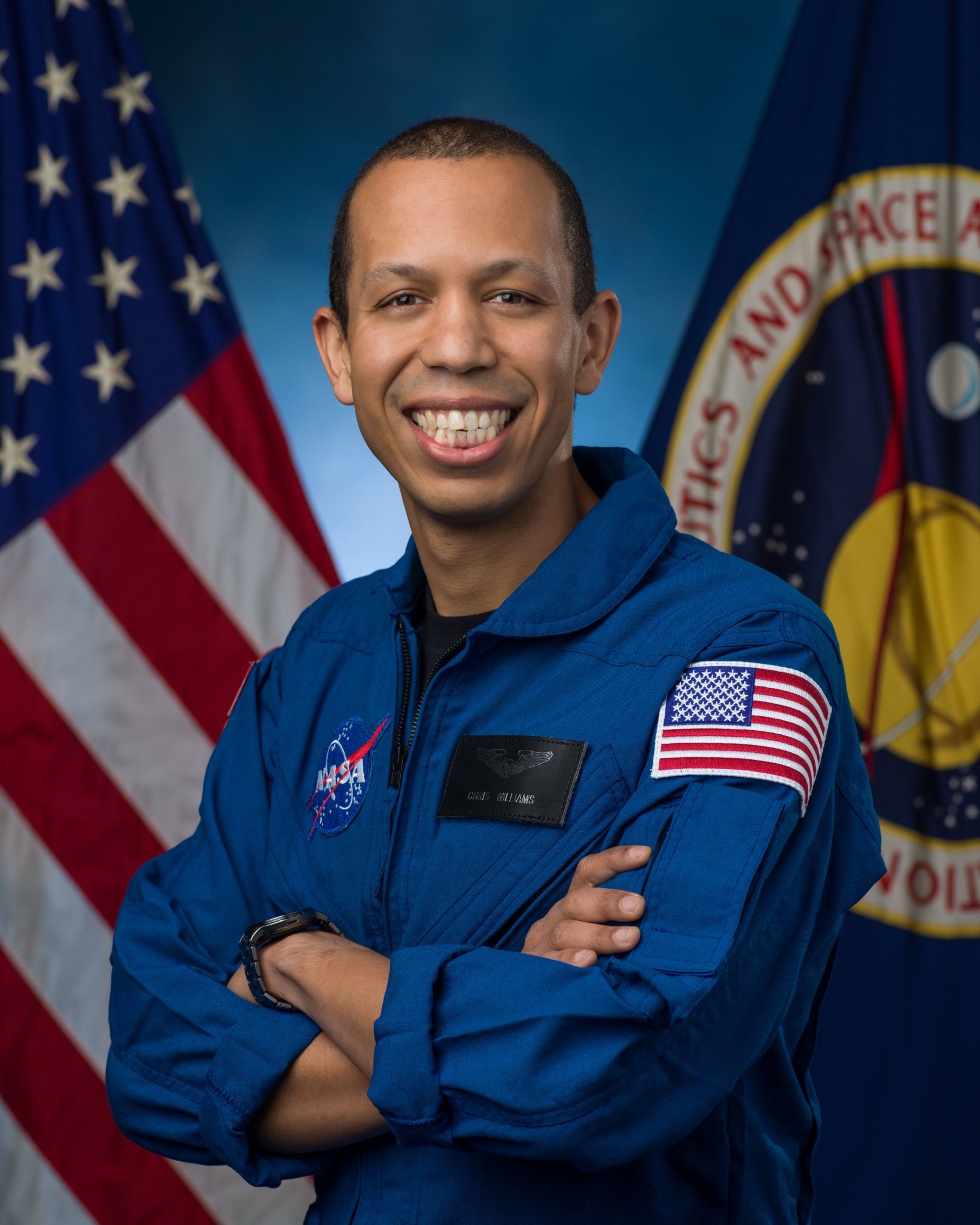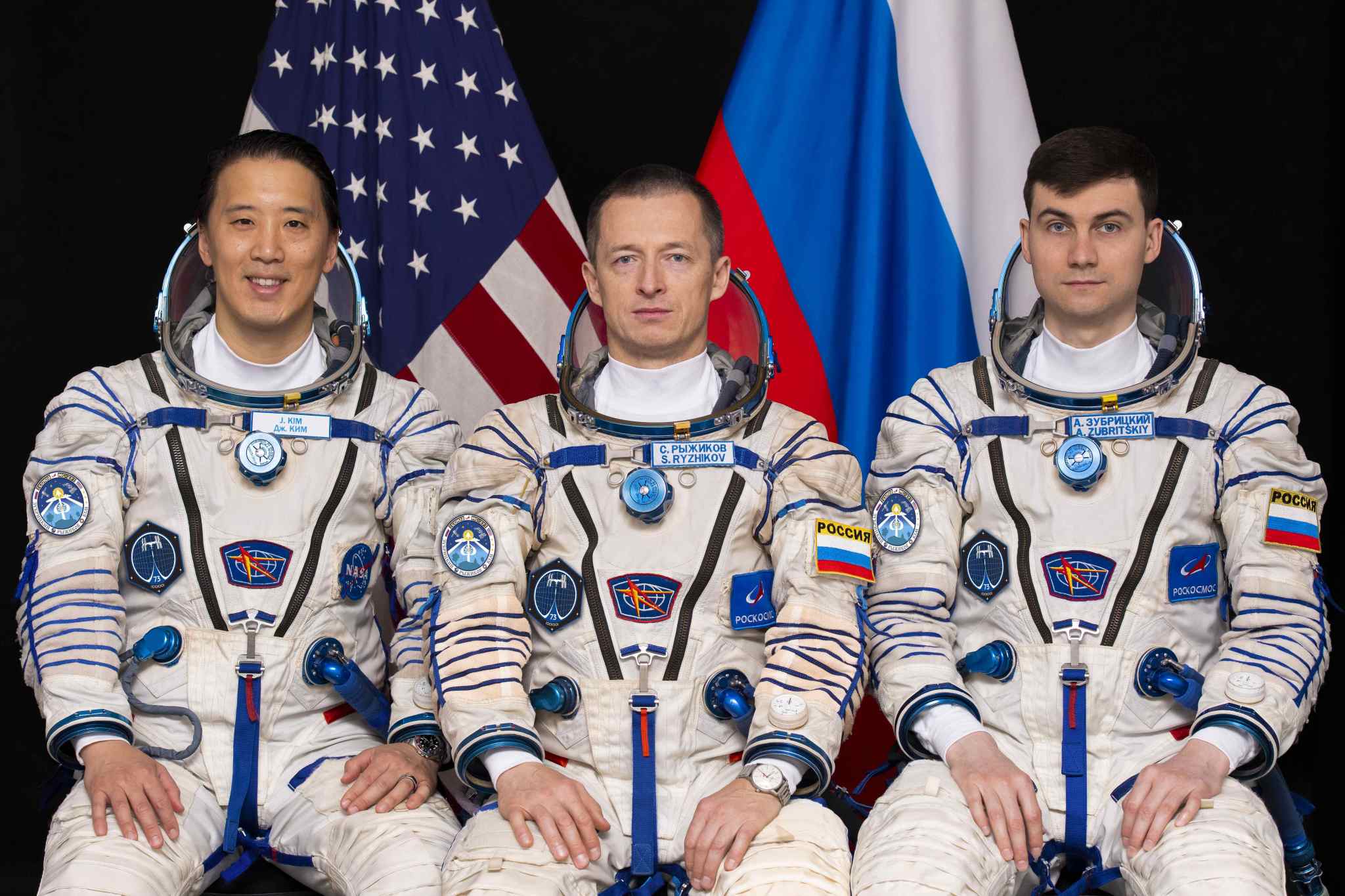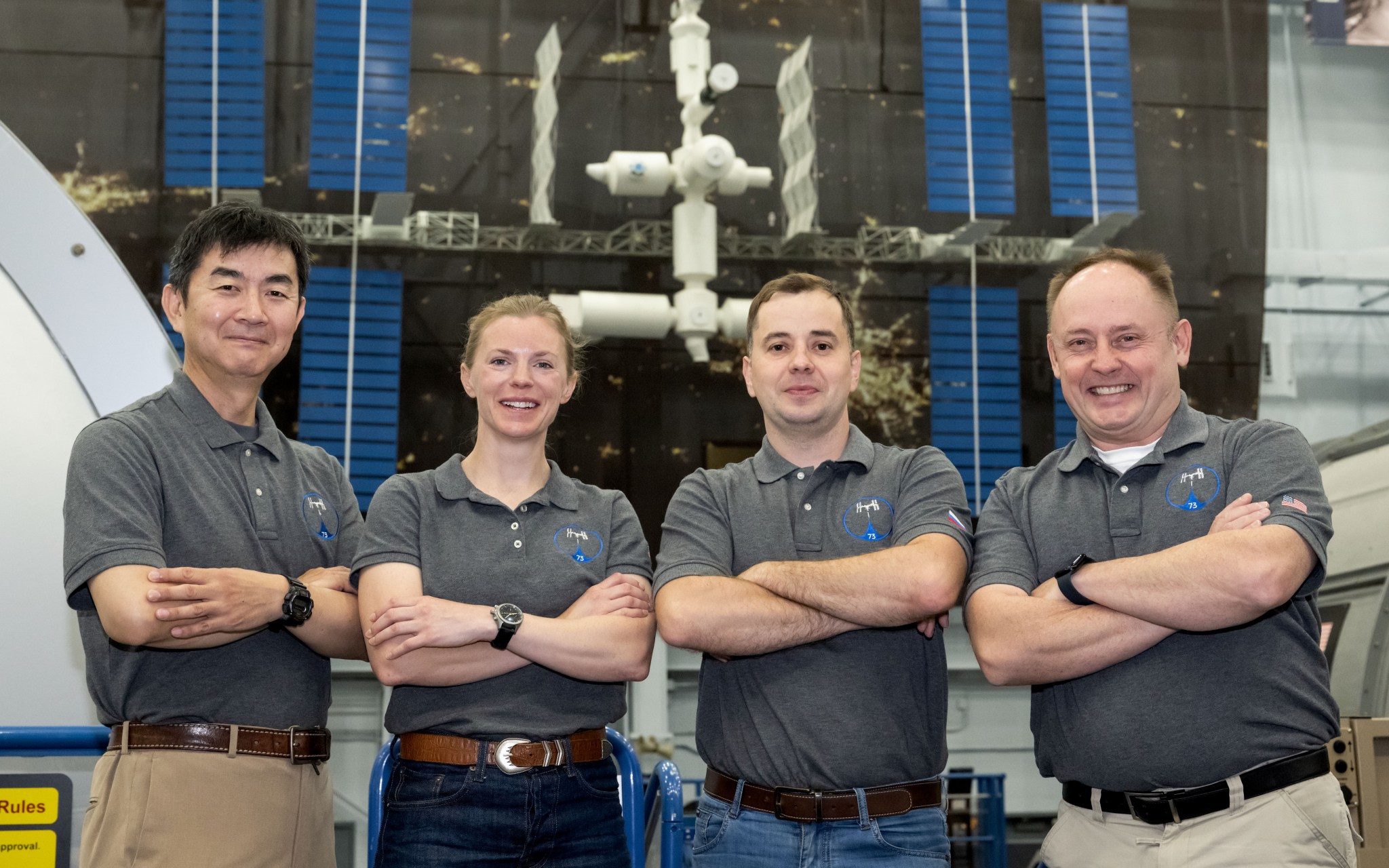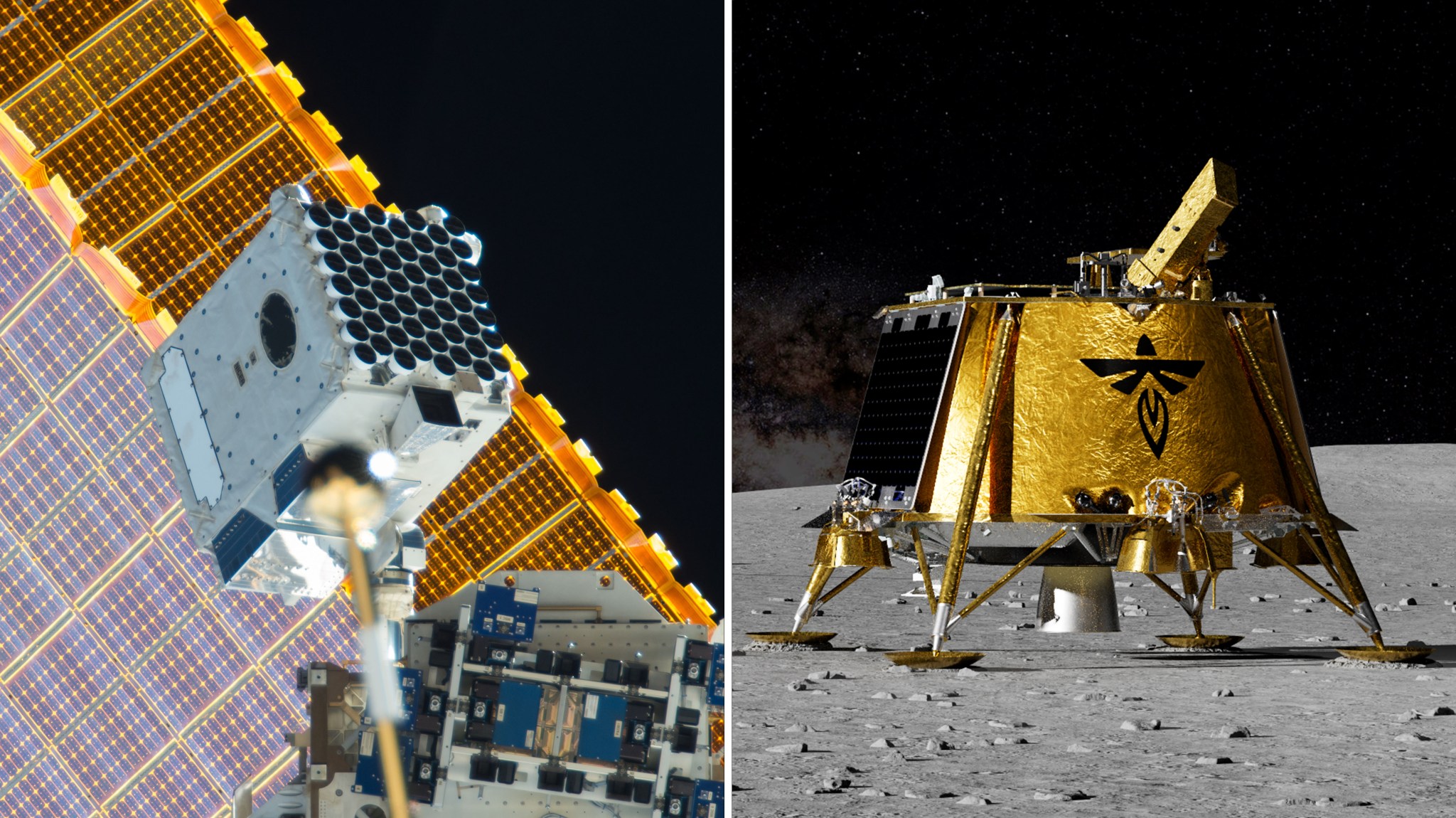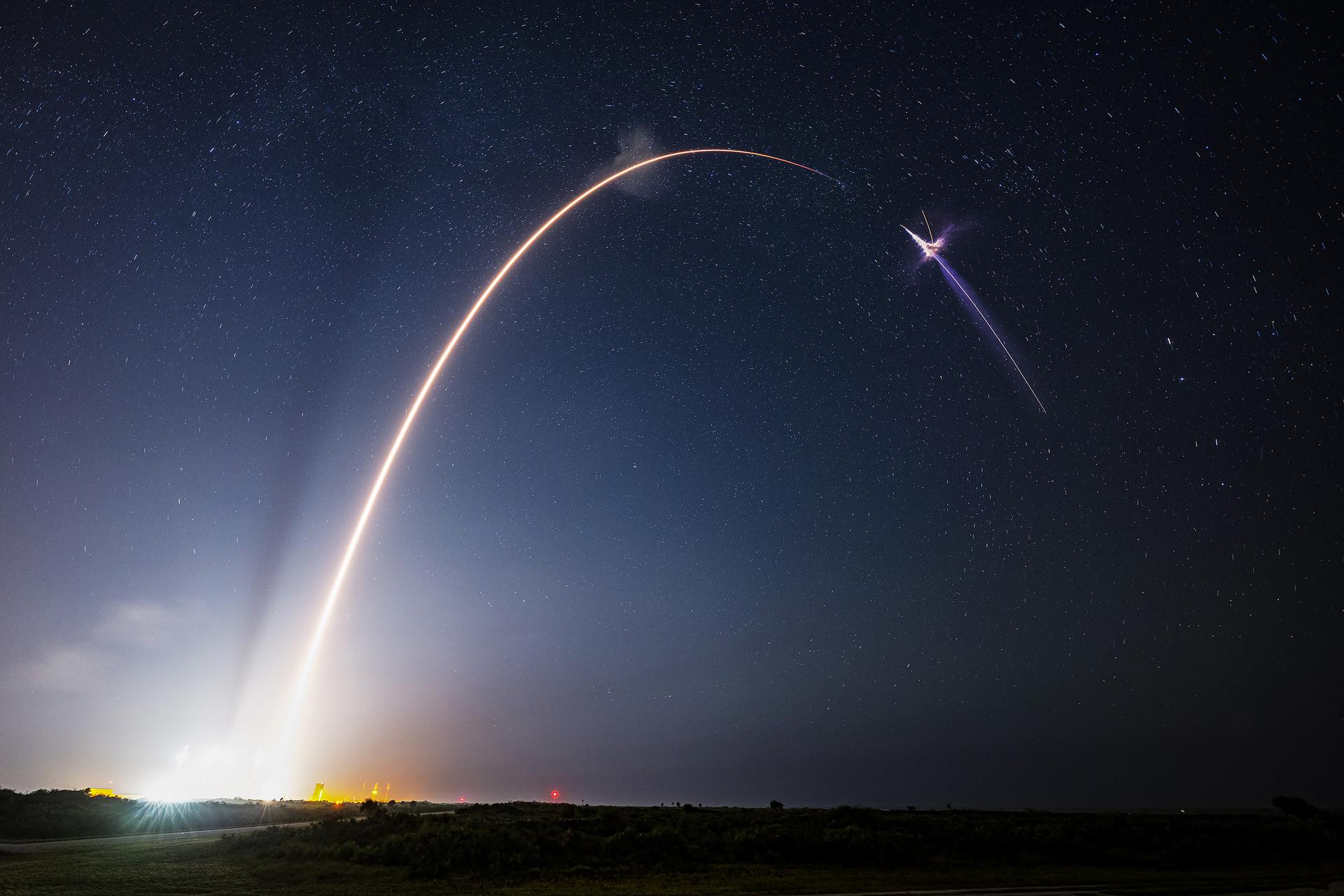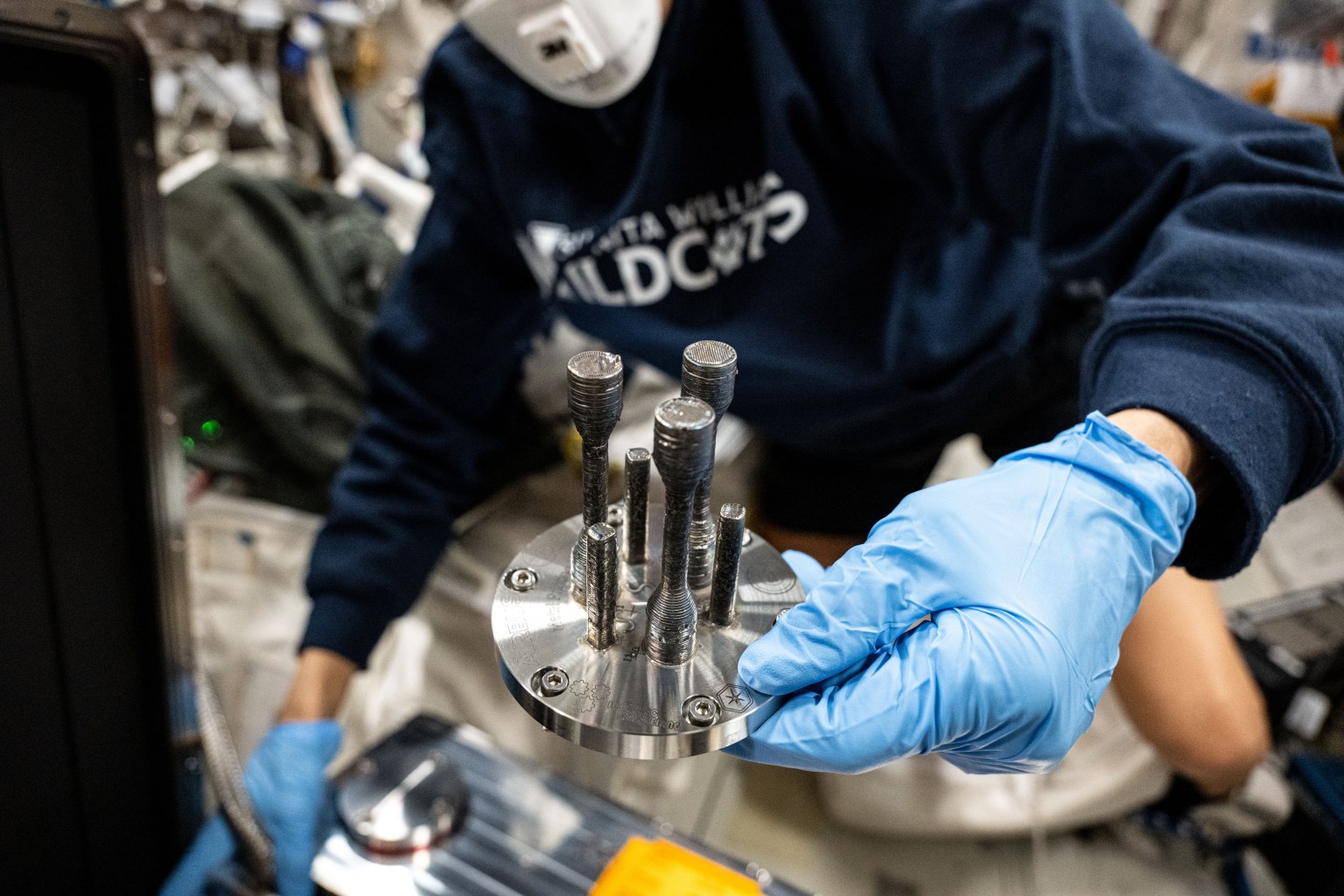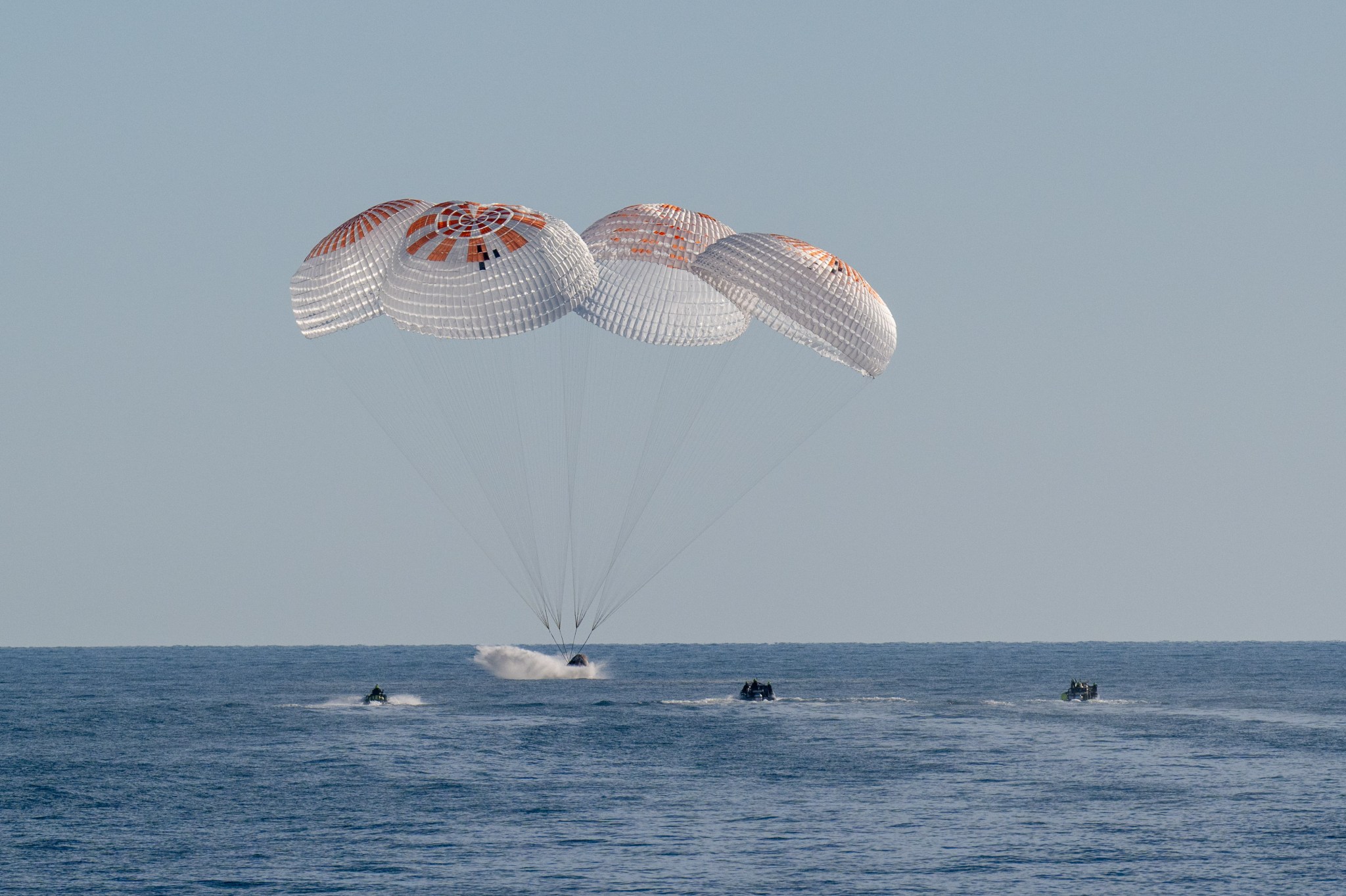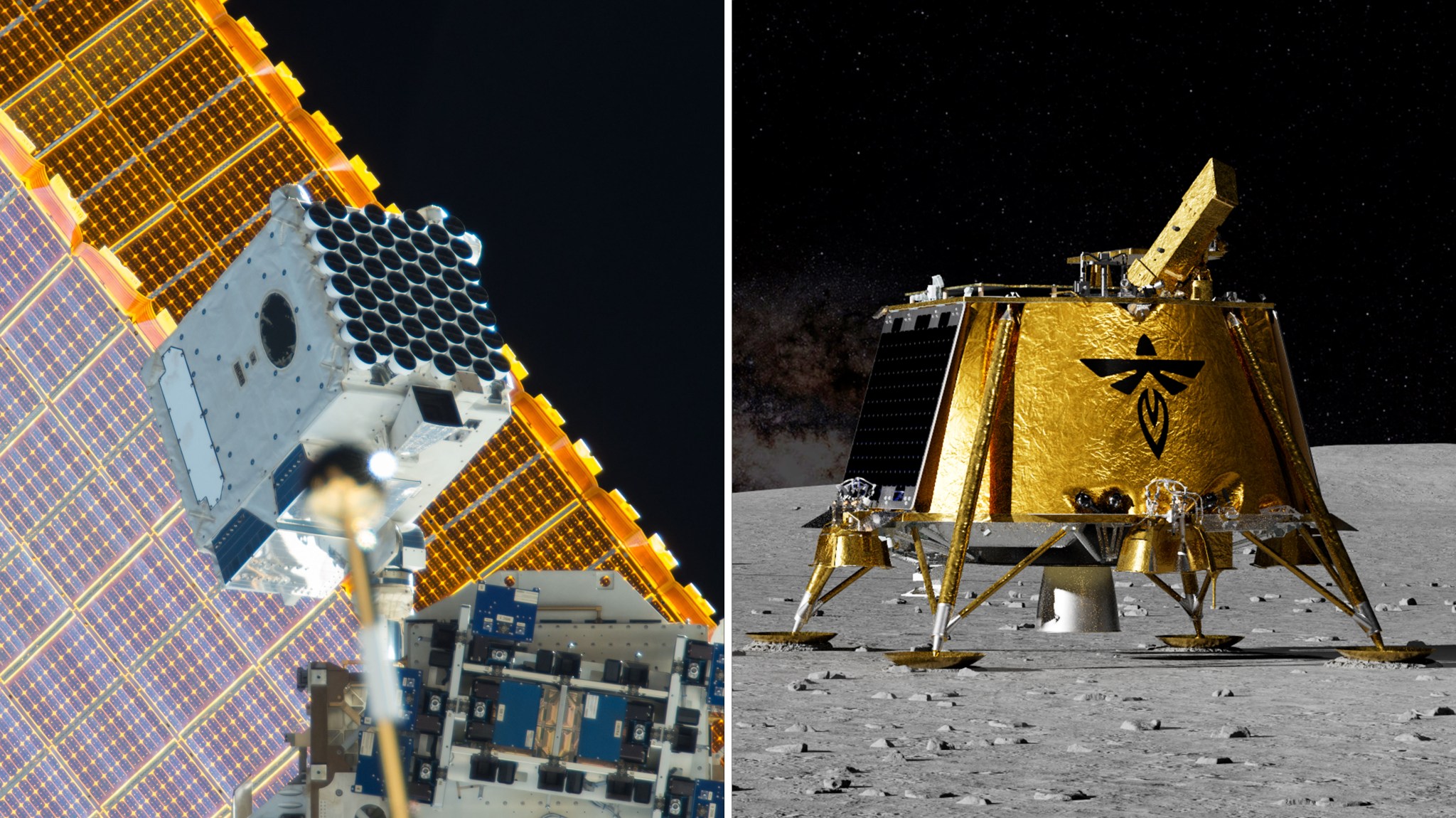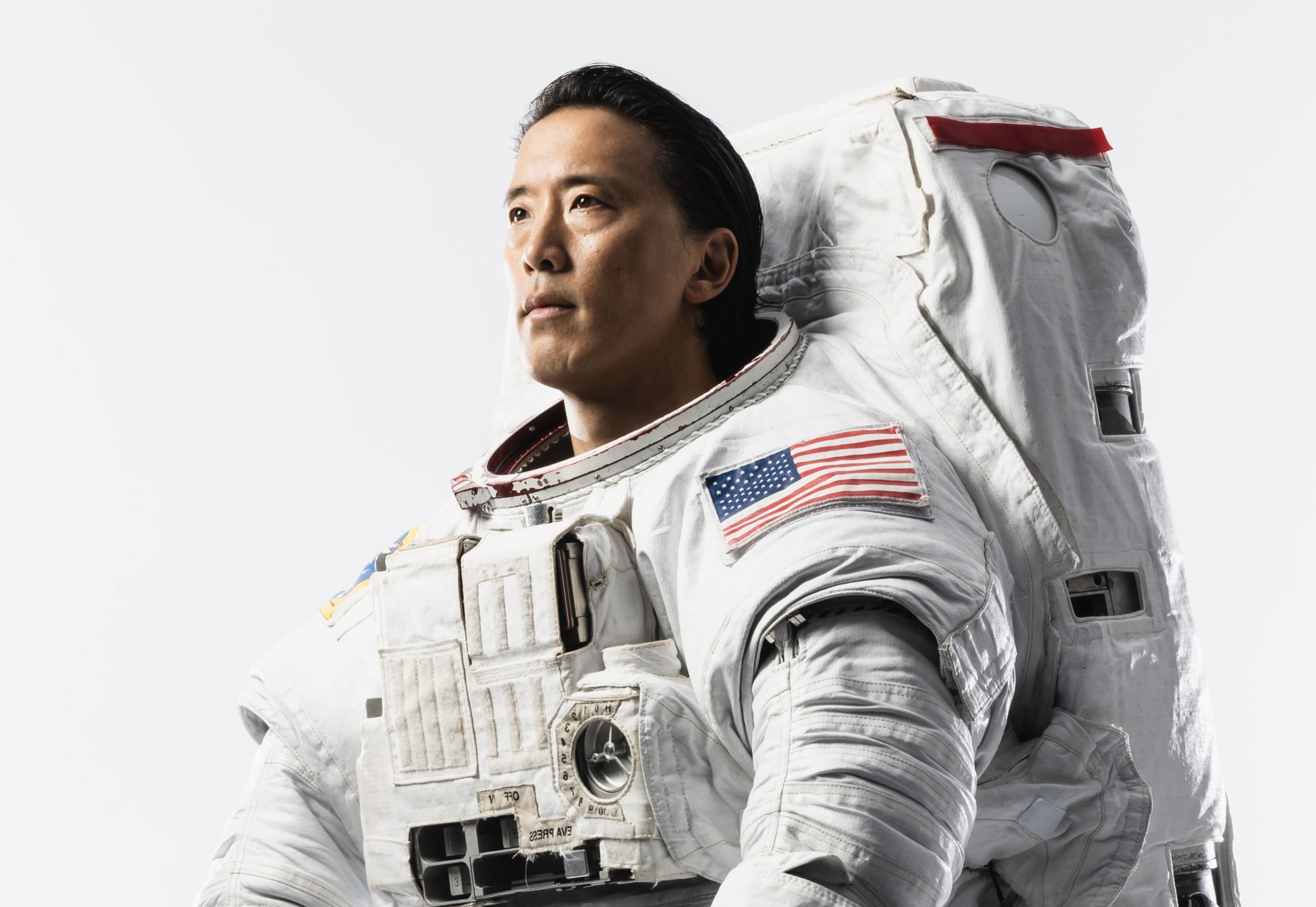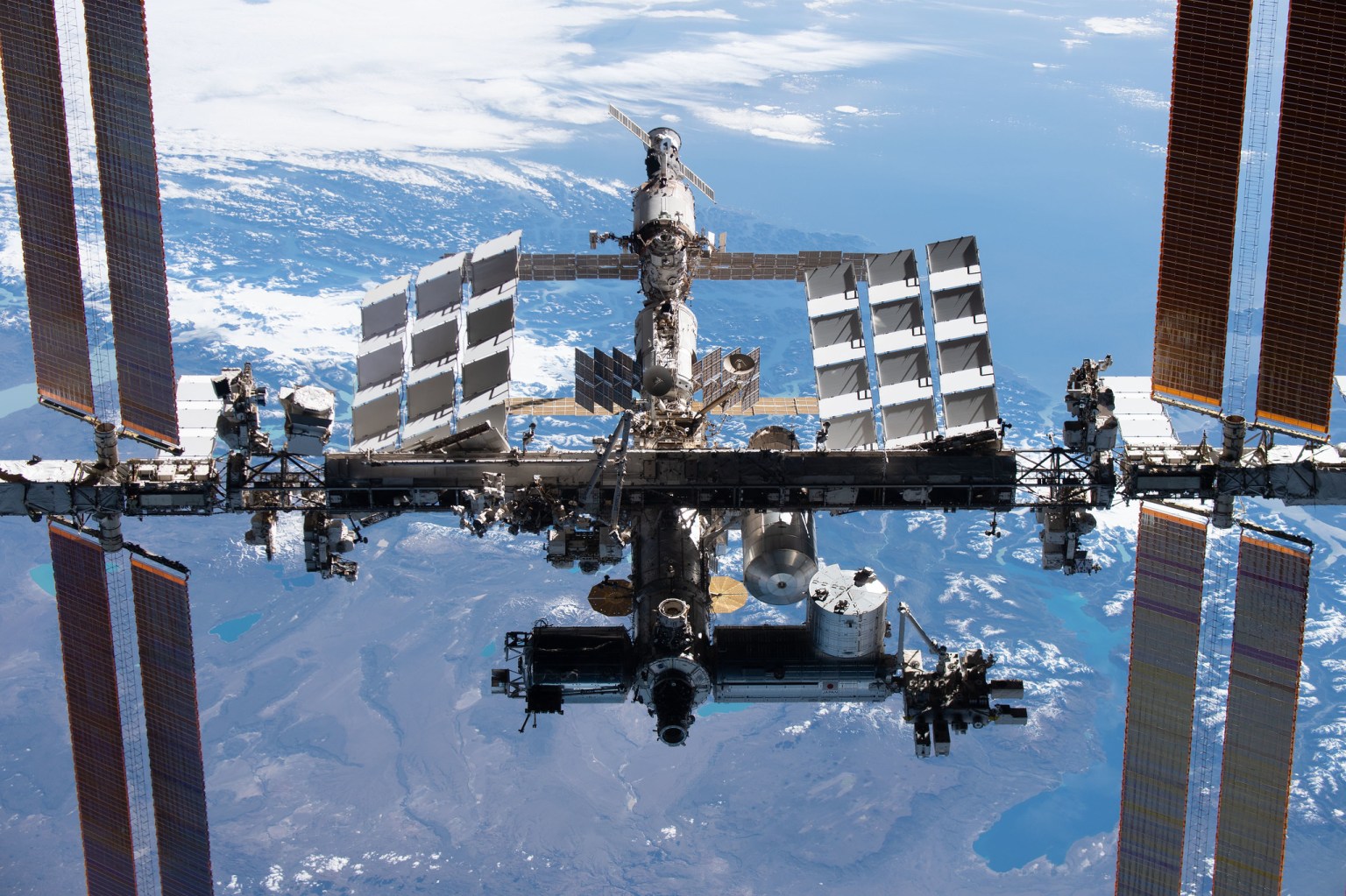NASA astronaut Christopher Williams poses for a portrait at NASA’s Johnson Space Center in Houston, Texas. Credit: NASA NASA astronaut Chris Williams will embark on his first mission to the International Space Station, serving as a flight engineer and Expedition 74 crew member. Williams will launch aboard the Roscosmos Soyuz MS-28 spacecraft in November, accompanied by Roscosmos cosmonauts Sergey Kud-Sverchkov and Sergei Mikaev. After launching from the Baikonur Cosmodrome in Kazakhstan, the trio will spend approximately eight months aboard the orbiting laboratory. During his expedition, Williams will conduct scientific investigations…
Read MoreTag: ISS Research
NASA Sets Coverage for Crew Launch to Join Station Expedition 72/73
The Roscosmos Soyuz MS-27 spacecraft will launch from the Baikonur Cosmodrome in Kazakhstan to the International Space Station with (pictured left to right) NASA astronaut Jonny Kim and Roscosmos cosmonauts Sergey Ryzhikov and Alexey Zubritsky. Credit: Gagarin Cosmonaut Training Center NASA astronaut Jonny Kim will launch aboard the Roscosmos Soyuz MS-27 spacecraft to the International Space Station, accompanied by cosmonauts Sergey Ryzhikov and Alexey Zubritsky, where they will join the Expedition 72/73 crew in advancing scientific research. Kim, Ryzhikov, and Zubritsky will lift off at 1:47 a.m. EDT Tuesday, April…
Read MoreNASA Shares SpaceX Crew-11 Assignments for Space Station Mission
NASA’s SpaceX Crew-11 members stand inside the Space Vehicle Mockup Facility at the agency’s Johnson Space Center in Houston. From left are Mission Specialist Kimiya Yui from JAXA (Japan Aerospace Exploration Agency), Commander NASA astronaut Zena Cardman, Mission Specialist Oleg Platonov of Roscosmos, and Pilot NASA astronaut Mike Fincke. Credit: NASA As part of NASA’s SpaceX Crew-11 mission, four crew members from three space agencies will launch in the coming months to the International Space Station for a long-duration science expedition aboard the orbiting laboratory. NASA astronauts Commander Zena Cardman…
Read MoreInvestigaciones de la NASA en la estación espacial ayudan a impulsar la ciencia lunar
En esta ilustración se muestra al telescopio NICER (a la izquierda) montado en la Estación Espacial Internacional y al telescopio LEXI (a la derecha) sujeto a la parte superior del módulo Blue Ghost de Firefly Aerospace. NASA/Firefly Aerospace La Estación Espacial Internacional sustenta una amplia gama de actividades científicas, desde la observación de nuestro universo hasta el logro de avances en investigaciones médicas, y es un campo de pruebas activo en la tecnología para futuras misiones de exploración en la Luna y más allá. La misión Blue Ghost 1 de Firefly…
Read MoreNASA Invites Media to SpaceX’s 32nd Resupply Launch to Space Station
The SpaceX Falcon 9 rocket carrying the Dragon spacecraft lifts off from Launch Complex 39A at NASA’s Kennedy Space Center in Florida on Nov. 4, 2024, on the company’s 31st commercial resupply services mission for the agency to the International Space Station. Credit: SpaceX Media accreditation is open for the next launch to deliver NASA science investigations, supplies, and equipment to the International Space Station. NASA and SpaceX are targeting no earlier than Monday, April 21, to launch the SpaceX Dragon spacecraft on the company’s Falcon 9 rocket from Launch…
Read More3D Printing: Saving Weight and Space at Launch
4 Min Read 3D Printing: Saving Weight and Space at Launch The first metal part 3D printed in space. Credits: ESA Science in Space March 2025 Additive manufacturing, also known as 3D printing, is regularly used on the ground to quickly produce a variety of devices. Adapting this process for space could let crew members create tools and parts for maintenance and repair of equipment on the spot, rather than trying to bring along every item that might be needed. The ability to manufacture things in space is especially important…
Read MoreWelcome Home! NASA’s SpaceX Crew-9 Back on Earth After Science Mission
NASA astronauts Nick Hague, Suni Williams, Butch Wilmore, and Roscosmos cosmonaut Aleksandr Gorbunov land in a SpaceX Dragon spacecraft in the water off the coast of Tallahassee, Florida on March 18, 2025. Hague, Gorbunov, Williams, and Wilmore returned from a long-duration science expedition aboard the International Space Station. Credit: NASA/Keegan Barber NASA’s SpaceX Crew-9 completed the agency’s ninth commercial crew rotation mission to the International Space Station on Tuesday, splashing down safely in a SpaceX Dragon spacecraft off the coast of Tallahassee, Florida, in the Gulf of America. NASA astronauts Nick…
Read MoreNASA Space Station Research Helps Power Moon Science
NICER (left) is shown mounted to the International Space Station, and LEXI (right) is shown attached to the top of Firefly Aerospace’s Blue Ghost in an artist’s rendering. NASA/Firefly Aerospace The International Space Station supports a wide range of scientific activities from looking out at our universe to breakthroughs in medical research, and is an active proving ground for technology for future Moon exploration missions and beyond. Firefly Aerospace’s Blue Ghost Mission-1 landed on the Moon on March 2, 2025, kicking off science and technology operations on the surface, including…
Read MoreNASA Astronaut Jonny Kim to Discuss Upcoming Launch, Mission
Official portrait of NASA astronaut Jonny Kim, who will serve as a flight engineer during Expedition 73. Credit: NASA NASA will provide interview opportunities with astronaut Jonny Kim beginning at 9 a.m. EDT, Tuesday, March 18, to highlight his upcoming mission to the International Space Station in April. The virtual interviews from Star City, Russia, will stream live on NASA+. Learn how to watch NASA content through a variety of platforms, including social media. Media interested in participating must contact the newsroom at NASA’s Johnson Space Center in Houston no…
Read MoreNASA, Partners to Conduct Space Station Research During Expedition 73
3 Min Read NASA, Partners to Conduct Space Station Research During Expedition 73 NASA NASA astronauts are gearing up for a scientific mission aboard the International Space Station. Expedition 73 NASA astronauts Nichole Ayers and Anne McClain, JAXA (Japan Aerospace Exploration Agency) astronaut Takuya Onishi, and Roscosmos cosmonaut Kirill Peskov will launch in March as part of the agency’s SpaceX Crew-10 mission. NASA astronaut Jonny Kim will join the crew when he launches aboard the Roscosmos Soyuz MS-27 spacecraft in April alongside Roscosmos cosmonauts Sergey Ryzhikov and Alexey Zubritsky. Read…
Read More